Teff, the Most Nutritious and Gluten Free Crop
Teff, the Most Nutritious and Gluten Free Crop, Eragrostis Teff (*ጤፍ ) grows in almost all altitudes and soil types of Ethiopia and is naturally gluten-free. One of the famous Teff growing areas is the long and extended Jema (ዠማ) valley of the Amhara region in North Shoa.
This Amazing tiny grass/plant but the richest in nutrients is not only indigenous but also one of the major crops of the Amharas. Teff has been cultivated/grown as a crop for many thousand years (BC) only in Ethiopia. When Ethiopia was reconstituted during King Menelik II in the 20th Century, Teff plantation expanded from the high and mid altitudes of the Amhara areas to the South, East, and West by soldiers called NEFTEGNAS.
I was born and grew up in North Shoa where Teff is one of the major crops and participated in ploughing, weeding, harvesting, piling/mounding and threshing at *WUDMA (Amharic) using as many oxen as possible (*WUQIYA). Based on my own experience and further research with Teff cultured farmers of North Shoa, it is my pleasure to share the following information to people who have great interest to learn about this very astonishing but little known crop.
Some say that TEFF means “Lost” as the name in Amharic is related to *TEFA. However, it also seems that Teff means tiny or very small. To justify this there is an Amharic saying “*KEME TEFF ALQOTIREWUM” which implies that someone does not give consideration for a certain issue, person or thing as Teff.
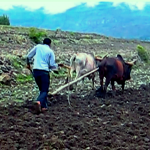 |
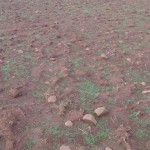 |
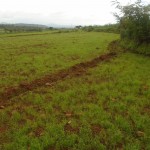 |
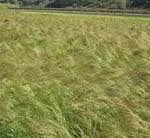 |
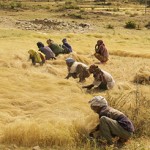 |
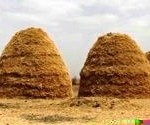 |
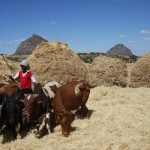 |
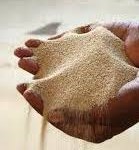 |
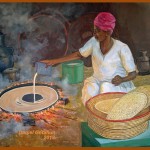 |
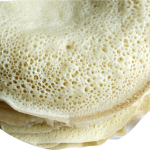 |
Type of Teff (Landraces)
Farmers and consumers identify and categorize Teff into 3 different types based on their colors:
- The white Teff which is considered to be luxury food and a little bit expensive than the Black/brown and the SERGEGNA (mixture of the white and the Black/brown)
- The SERGENA (Mixture of the White and the black/broun) has less price than the white and higher price than the Brown /black
- The TIKUR (Black/brown) Teff is less expensive in its price than the white and the SERGEGNA (mixture) but exceeds both of them in its iron content.
Teff Injera
The most nutritious and gluten free Teff injera can be white or Black/Brown. You cannot say Black/Brown injera or white Injera. You need to say: White teff Injera or Black Tef Injera. Ethiopians, mainly the Amharas, make Injera not only from Teff but also from Wheat, Barley and Sorghum. So if you want to specify the type of Injera you can say Teff Injera, Sorghum Injera, Wheat Injera etc. A well baked, fermented and made Injera has “AYIN in Amharic” or Eyes. Any Injera without Eyes will be considered as a spoiled Injera and cannot be given to guests. The Eyes are the densely populated beautiful holes or openings on the front side of the Injera. Teff Injera is pleasing in its appearance and look like a fresh honeycomb in a be haive. In Amharic Honeycomb is cold “YEMAR INJERA”.
Comparing Honeycomb and Teff Injera
Comparing Honeycomb and Teff Injera
Eating Teff Injera
Teff Injera is eaten by hand with WAT (ወጥ). The type of WAT (Sauce) varies depending on the preference or on the affordability of other products for poorer farmers. People on low income make WAT from SHIRO, KIK, Vegetables or by mixing the formers with meat. Teff Injera can be eaten with BERBERE (hot grounded pepper) or even alone without any sauce or other ingredients if a family or an individual cannot afford or make the WAT. DORO WAT (usually chicken and eggs) is the most prefered and delicious sauce for Ijera. Most Ethiopians even the poorest of the poor will cook DORO WAT during holidays such as New Year, Masqal and GENA.
Uses of Teff
Teff is not only a source of delicious and nutritious food but also has other valuable uses such as:
- Very important cash crop. It has the highest price per Kg when compared with all other cereals and pulses
- The straw (CHEED) is excellent forage for animals because:
- it is rich in its nutrient content as its grains.
- its straw is fine, soft and palatable for animals.
- the straw contains very little water that means it has a very high Dry Matter in percentage.
- The straw is also an excellent raw material for building houses, granary, *QUWAT and *DIBIGNIT and other smaller containers
- The Black/brown Teff has medicinal values e.g. for Anemia.
- Teff is also good for soil and moisture conservation. The plant covers the land fully after a week and protects the soil from direct rain damage as well as from runoff or erosion. It also conserves moisture as the spacings between teff plants are narrow.
Storage
One of the quality of Teff is its storability. It is capable of being stored for many years without losing its freshness or quality. Teff is also resistant to granary insect/pests which are serious problems of cereals and beans. The best way of storing Teff Grains is the traditional storage method in GOTA or GOTERA. The GOTA is made up of local materials such as wood, mud, teff straw and wood bark fiber “LIX”.
There are variety of straws to make the cover so that rain/water will not leak into the grains. Teff does not like moist and damp containers so care should be taken when constructing the straw cover or the roof. GOTA looks like a small house and varies in its size depending upon the farmer’s ability and wealth. Big Gota can contain up to 14 CHINET or 7 DAWULA which is about 800 kg. A rich (BALETSEGA) farmer can own up to 6 GOTA where he stores not only Teff but also other major crops. Most Amhara areas grow different crops to satisfy their needs as well as to manage their land through crop rotation. If the farmer is very poor he usually stores his grains in DIBIGNIT, SLICHA or in sacks at home.
Teff grows well in almost all altitudes and soil types but highlands above 2800 M.A.S. may affect its production because of frost. It enjoys optimum soil moisture during its short maturing time which is in average from 7 to 9 Weeks. If Teff is sown on a moist soil and gets additional shower (Rain) immediately after planting it will emerge within 2 days time. No other cereal or crop has such an amazing speed of germination and emergence. It also perform well in low fertile soils as far as the land is prepared very well, there is sufficient moisture and the weeding is carried out on time properly. However, it does not like waterlogged areas.
The production is not only labour intensive but also requires a good knowledge about its soil preparation (ploughing), planting date, sowing rates, weeding, harvesting, mounding/piling, thrusting, refining and storing techniques using simple but sophisticated indigenous knowledge, resources, and practices.
Teff is Rich in calcium, iron, carbohydrate, fibre, phosphorus, protein, magnesium and many other vital trace elements, and provides an amazing set of amino acids. It exceeds wheat and barley by most of its packed nutrients. The Guardian called Teff ” The ultimate gluten-free crop and the grain can substitute for wheat flour in anything from bread and pasta to waffles and pizza bases.” The guardian further expressed its appreciation as follows: “Growing appetite for traditional crops and booming healthy-food and gluten-free markets are breathing new life into the grain, increasingly touted as Ethiopia’s “second gift to the world“, after coffee.”
Besides its richness in its nutritive values it has also impressive agronomic characteristics such us:
- Resistance to diseases and pests
- Drought resistance and drought escaping.
- Early Maturing it needs only 7-9 weeks to mature. And hence can be planted more than 2 times per year.
- High germination
- Small in size
- High nutritional content
- Wider adaptability. It can grow in almost all soil types and and all agro ecological zones.
- Best crop for storage. Can be stored for many years
References
Kefale Alemu on Teff Production Along the Great Valley of River Jema (ዠማ). Recorded by M Tikursew
The Guardia: Move over quinoa, Ethiopia’s teff poised to be next big super grain. Thursday 23 January 201408.00 GMT
harvest picture: http://wholegrainscouncil.org/whole-grains-101/teff-and-millet-november-grains-of-the-month
Unpublished research notes of Kefale Alemu and formal and informal discussions with farmers of Lamwasha (North Shoa) June 2014
Kefale Alemu: adesta@hotmail.com
Last updated on 08/22/2015
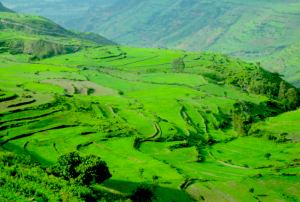
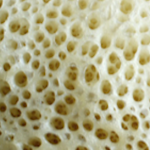
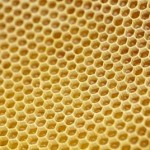
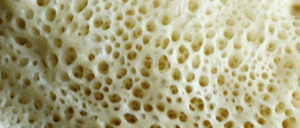
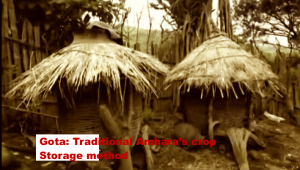
Leave a Reply
You must be logged in to post a comment.